Table of Contents
- Subject lines with 9–13 words and 71+ characters have the highest open rates (up to 40.71%).
- Phrases like “Study finds” and front-loaded brackets boost open and reply rates significantly.
- Exclusives and publication mentions drive higher engagement, yet they remain underutilized by most PR professionals.
- Title case outperforms sentence case, and higher reading levels (10th grade+) correlate with better open rates.
- Using journalist names in a subject line can negatively impact performance—focus on relevance to the beat instead.
- Highly targeted media lists, created using tools like ListIQ, enhance personalization and drive campaign success at scale.
As publications continue to cut staff and more SEOs flock to digital PR, the competition for journalists’ attention is fierce.
Even if you are newsjacking a trending topic, chances are several PR teams are doing the same.
To put yourself in the best position to succeed, you need data to inform your decisions.
To get to the bottom of what makes the best subject line, I’ve analyzed over 6 million email subject lines from digital PR campaigns.
A Quick Note on My Analysis
I’m prioritizing open rates as the leading metric of success. I polled PRs, and there was a split on where the focus should be:
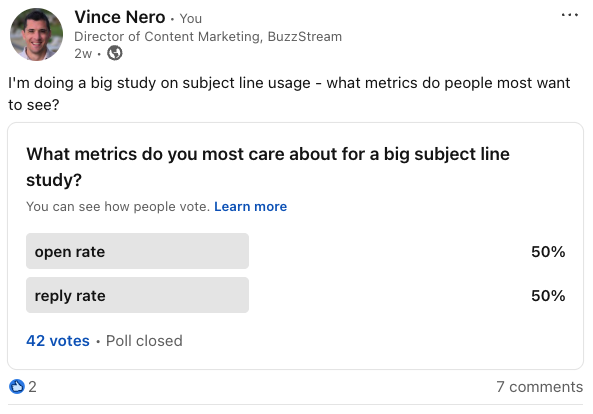
Realistically, click data is the ideal metric; however, click tracking is not something PRs typically include in their emails, as it may lead to the email being flagged as spam (or the journalist adding the click tracking link to their story).
Although there are concerns about inflated open rate metrics due to Apple MPP and Gmail image caching, I still lean on open rates as the leading indicator in this study, given the large sample size. (Though as you will see, in most cases, open rate and reply rate align.)
What is the Ideal Word Count for a PR Email Subject Line?
Based on our research, the 9-13 word range achieves the best open rate at 40.20%, although it’s only slightly higher than the 14-30 word range with 39.97%.
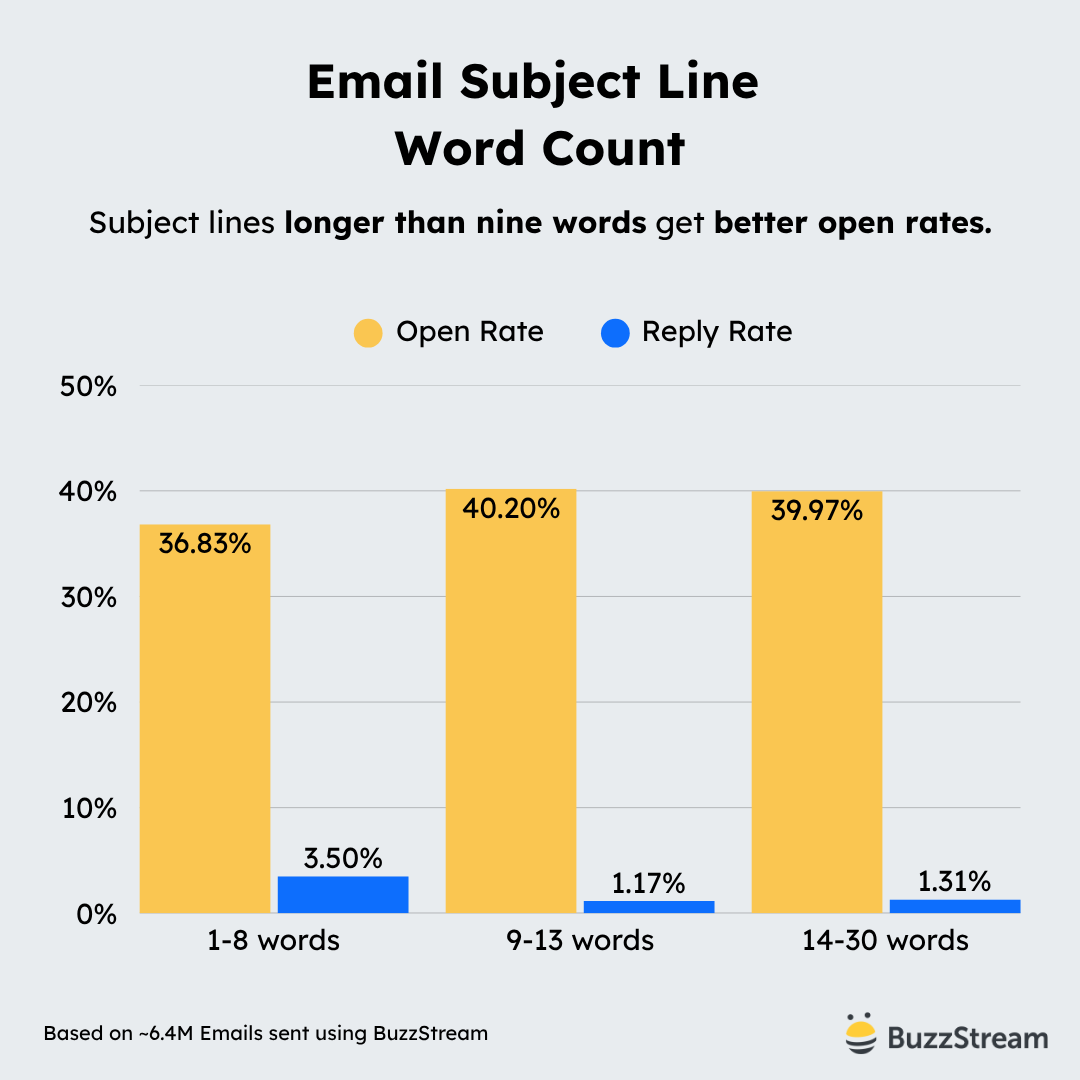
Keep in mind that depending on the email client and platform, recipients can only see a set number of words before the subject line gets cut off.
So, let’s quickly look at the breakdown of the character usage in email subject lines:
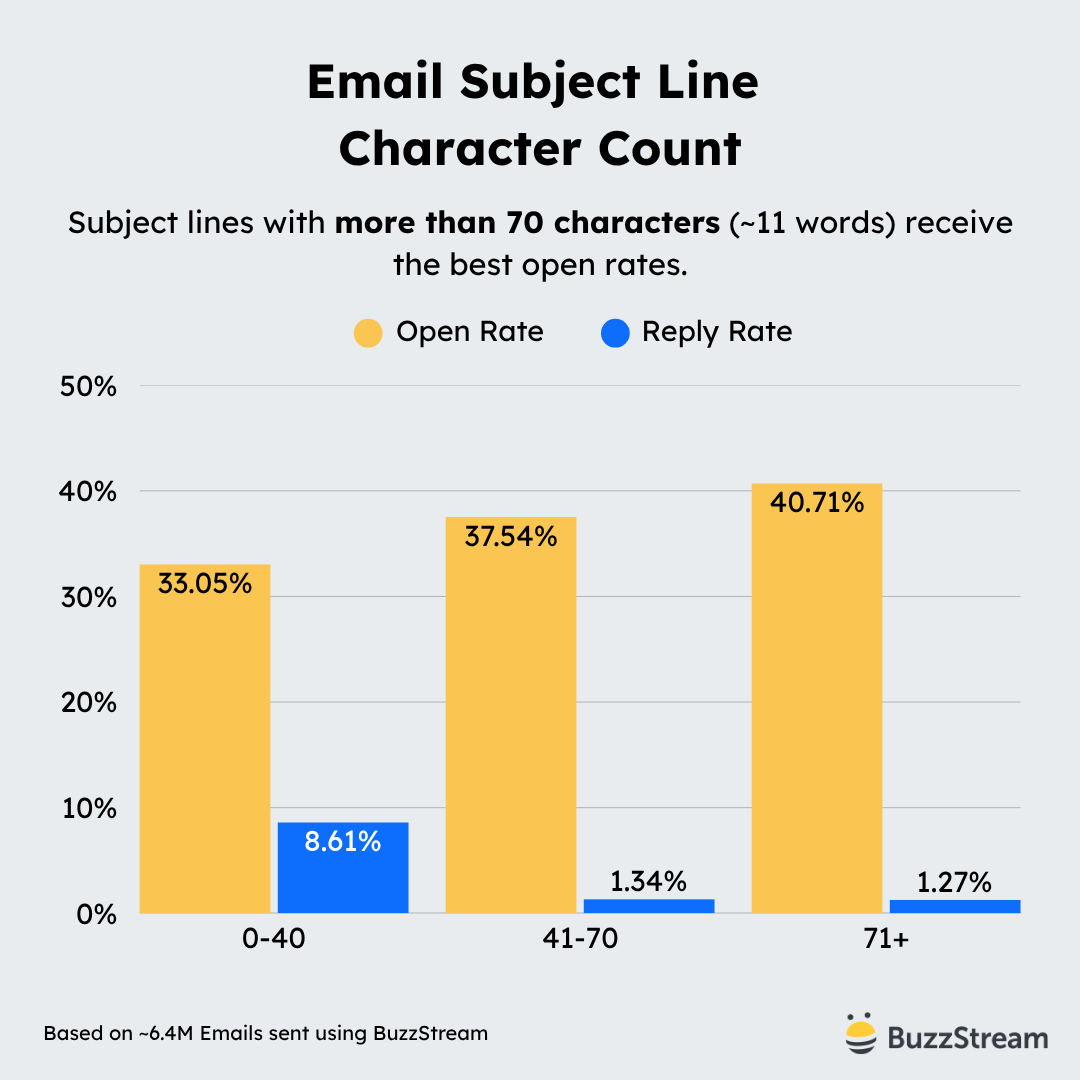
The ideal length, based on open rates, is more than 71 characters, with an open rate of 40.71%.
(We do see a spike in reply rate of 8.61% with the smaller subject lines, but upon closer examination, the number of emails sent at 0-40 characters represents just 1.48% of the total sample size.)
Seventy-one characters align with the average 14-30 word count.
Why does this work so well?
If we look at the breakdown of character limits based on Email Tool Tester data as they relate to average number of words seen, this 14-word, 71+ character aligns with ithe deal viewing window for desktop Gmail recipients:
| Device/Platform | Email Client | View | Subject Line Character Limit | Avg Words |
|---|---|---|---|---|
| Google Pixel 7 | Gmail App | Mobile | 33 | 5.08 |
| iPhone 14 | Gmail App | Mobile | 37 | 5.71 |
| Samsung S22 Ultra | Gmail App | Mobile | 36 | 5.34 |
| Desktop | Gmail (Browser) | Desktop | 88 | 14.07 |
| Desktop | Outlook (Browser) | Desktop | 51 | 8.57 |
To further support this, we surveyed our digital PR users’ data to understand where and who they email; Gmail addresses were most frequently used.
Therefore, it appears that optimizing for desktop on Gmail yields the best engagement.
However, there are some strategic ways around character limits.
One way is to front-load your subject line with the most eye-catching information.
In the next section, I decided to look at some phrase patterns.
How Should You Phrase Your Email Subject Lines?
Upon reviewing our data, I noticed some clear patterns in the subject lines.
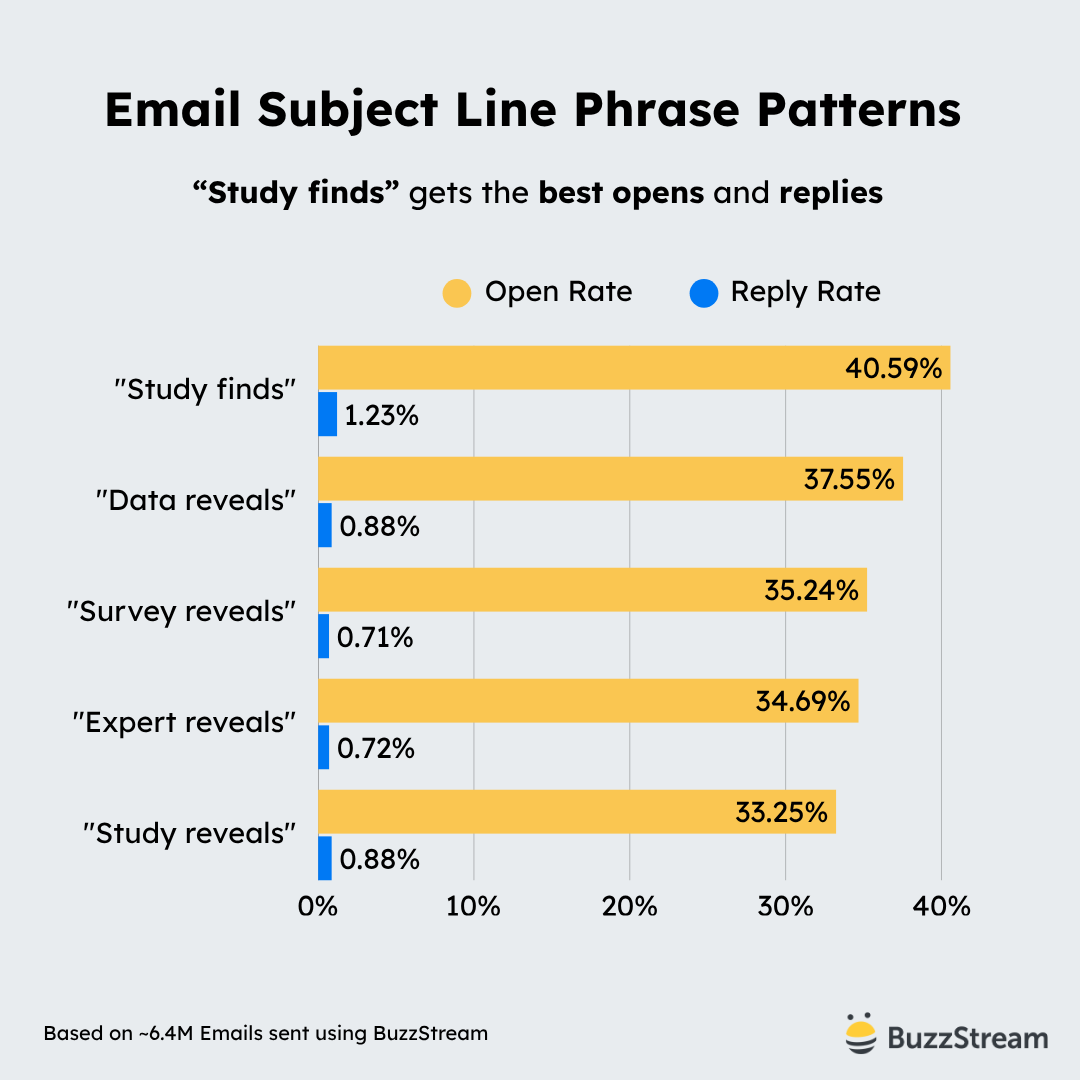
In our data, subject lines starting with “Study finds” achieve the best open rates and reply rates, at nearly 41% and 1.25%, respectively.
Second was “Data reveals” with a 37.55% open rate and a 0.88% reply rate.
The phrasing is one thing, but I’ve also noticed that our users tend to use structural patterns, such as brackets or special punctuation, in email subject lines.
Next, we’ll see how that kind of structure impacts opens and replies.
How to Structure PR Email Subject Lines?
Based on our data, the subject lines that led with brackets saw the best open rates (52.08%) and reply rates (2.24%).
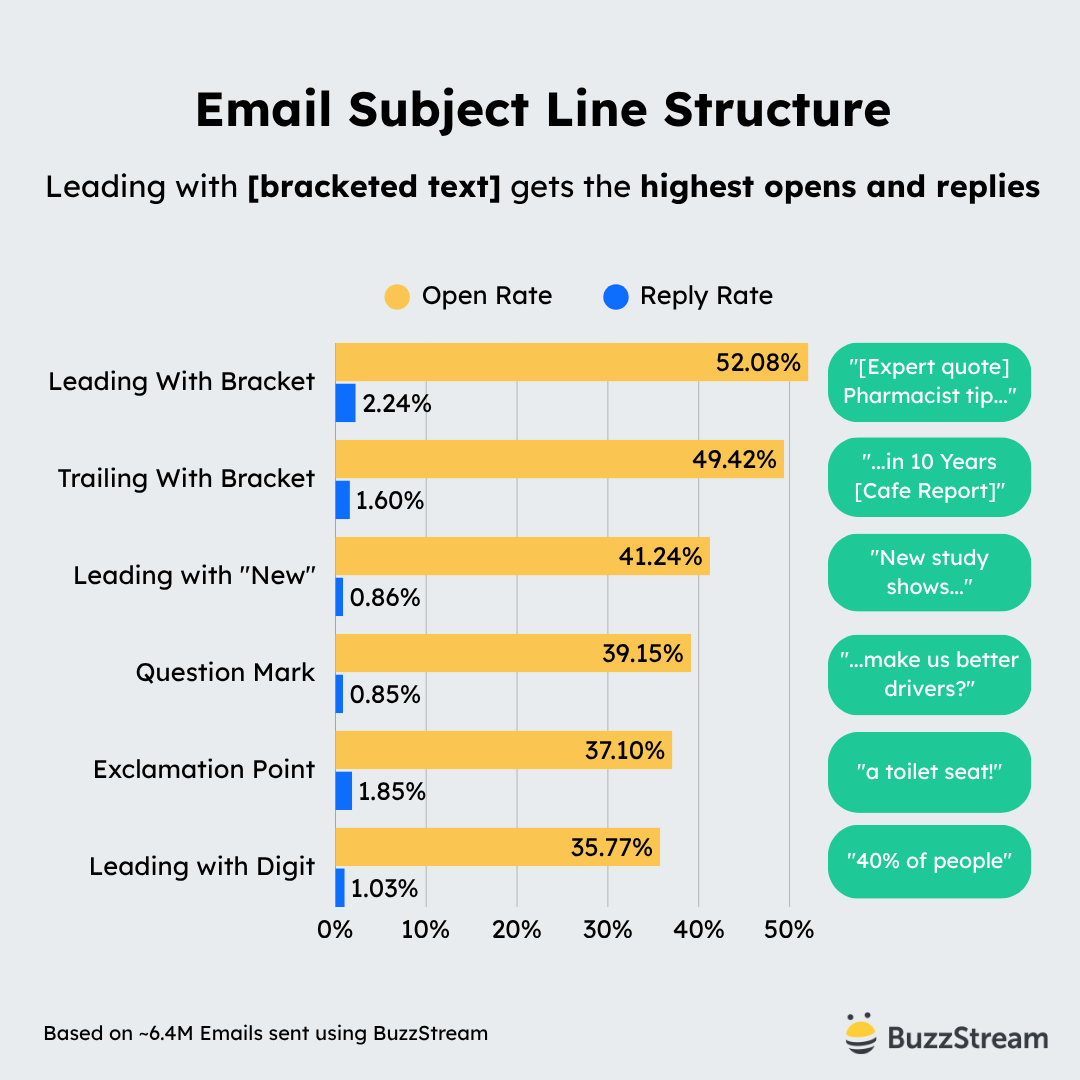
Even trailing with a bracket seemed to help open (49.42%) and reply rates (1.60%).
The brackets may serve as a visual cue to help stand out in a crowded inbox.
This made me think of some other visual cues that I’ve tried in the past, which led me to consider emojis.
Do Emojis Impact Subject Line Engagement?
And while emoji usage accounted for only a small percentage of our data, approximately 4%, it seemed to perform slightly better than others.
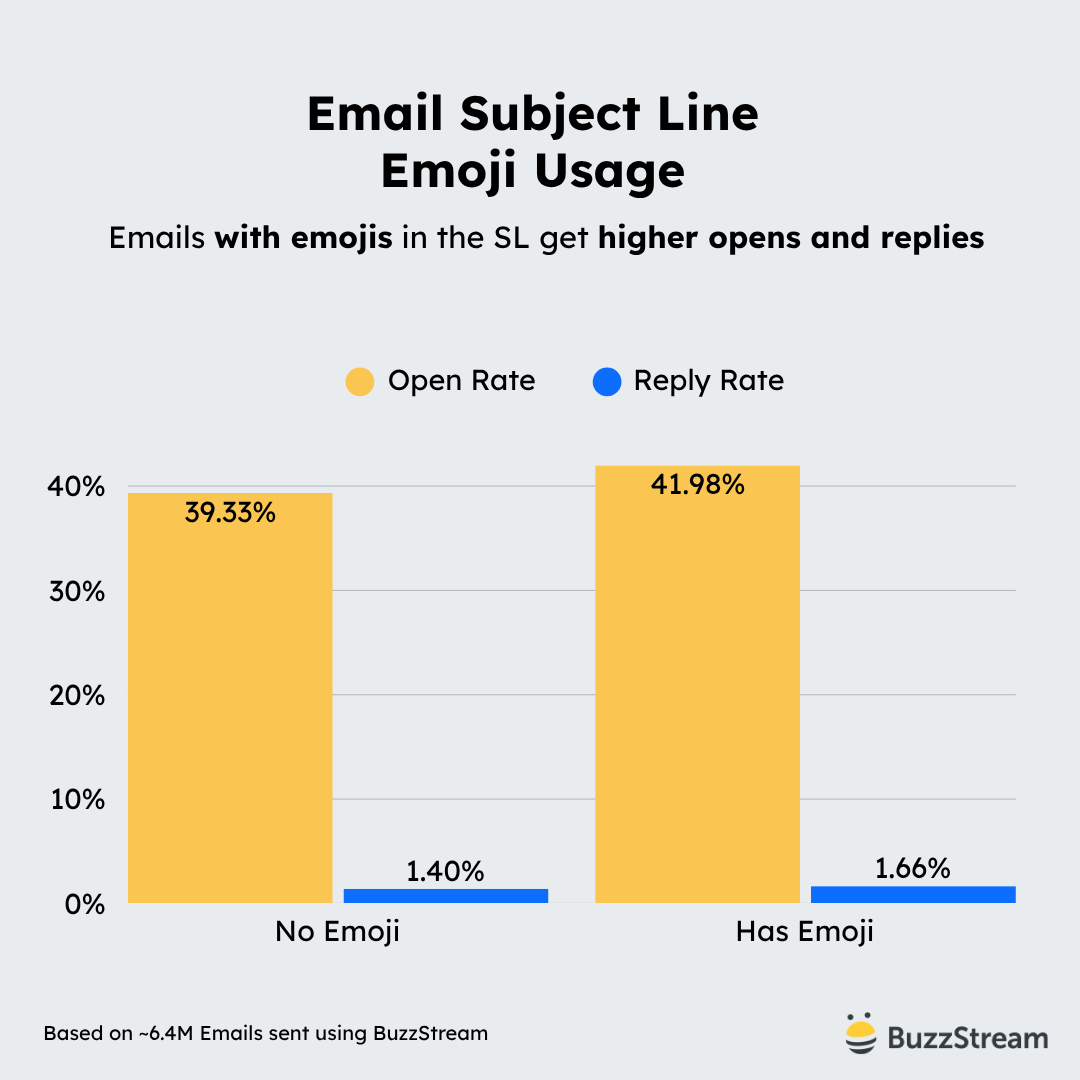
I was expecting to see a more drastic difference between emoji usage vs non-usage, but they don’t seem to have a significant impact on journalists.
If you’re interested, the beer emoji performed the best (53.57%):
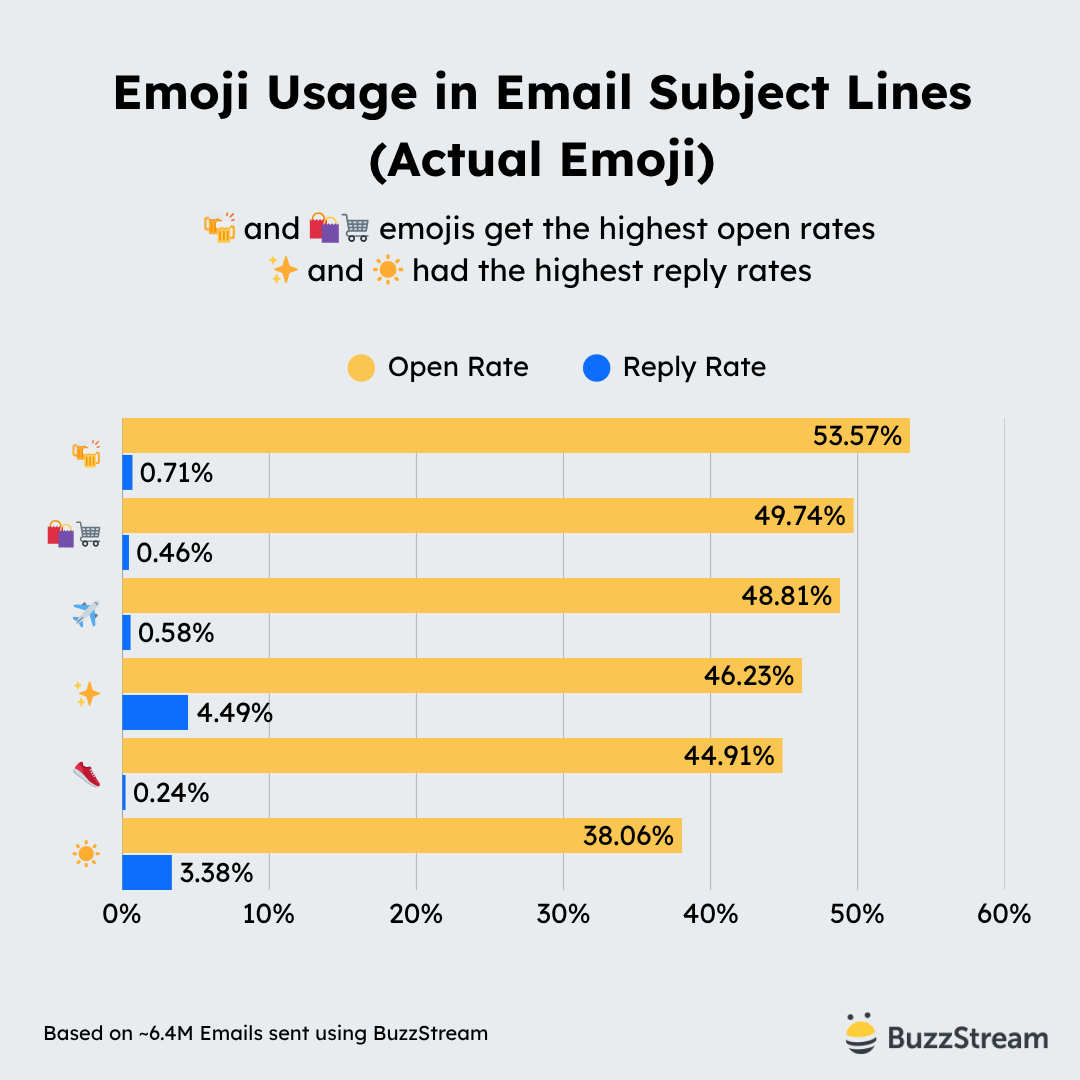
So, perhaps there are some stories and industries where it’s worth testing.
Emojis aside, there are some other ways to stand out in an inbox, and that’s personalization.
Let’s look at that next.
Does Personalizing Email Subject Lines Help Stand Out?
When we say the word “personalization”, many factors come to mind. I wrote about 8 different personalized email outreach techniques used within the email body copy.
For subject lines, the most common two ways of personalizing that I’ve come across are mentioning the recipient’s name or publication within the subject line (or both).
Mentioning a Website/Publication
When mentioning the publication, rates appear to skyrocket with a 50.81% open rate compared to 39.25% when there isn’t any mention.
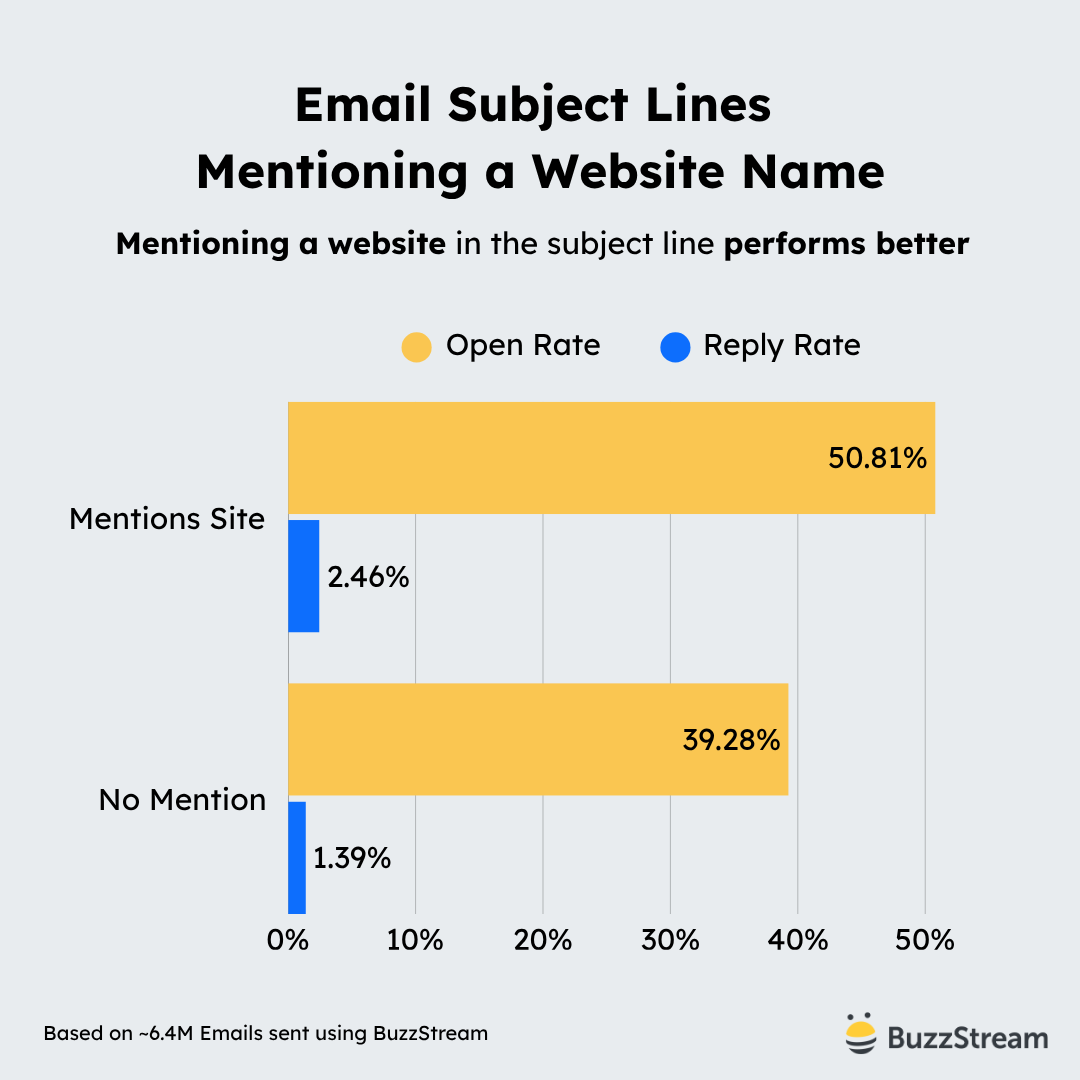
However, only 1% of our users mention a website in their outreach subject lines. So, there may be a missed opportunity here (albeit a small sample size).
The ones that did seem to include it when they mention “exclusives”, which we’ll get to later in this analysis.
Mentioning a Person’s Name
Based on our data, mentioning a name has a lower performance rate (38.45%) compared to subject lines that focus on the story.
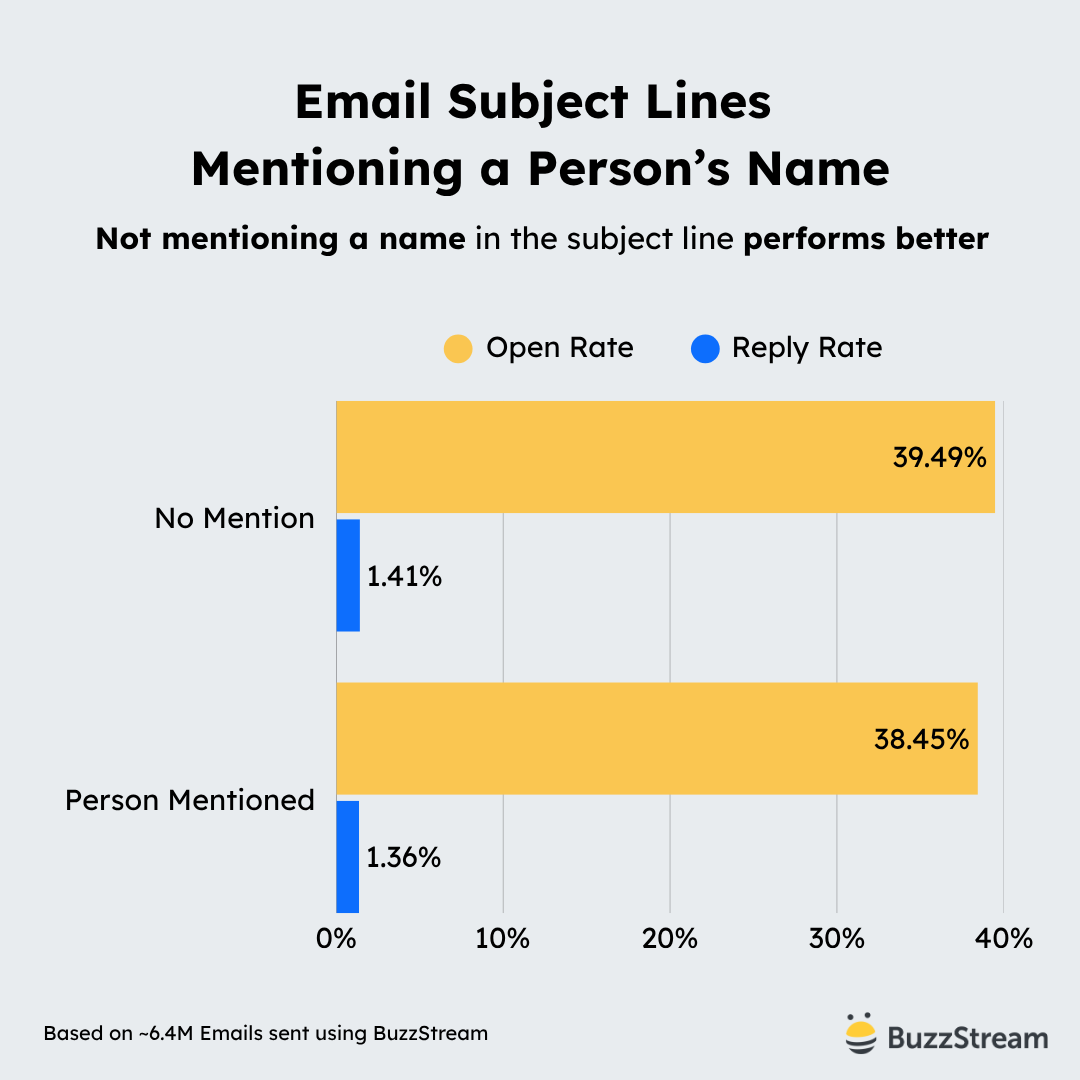
Mentioning a name can come off as over-personalized and too templated, which may put journalists off.
In our dataset, less than 1% of users put the name into the subject line. The ones that are mentioned are again mentioned in conjunction with “[Exclusive]”.
It seems like the Exclusive is a way to get journalists’ attention, so let’s look at that next.
Do Exclusives Perform Better?
When comparing open rates, exclusives have a clear advantage in opens, at 54.16% as compared to those without (37.16%).
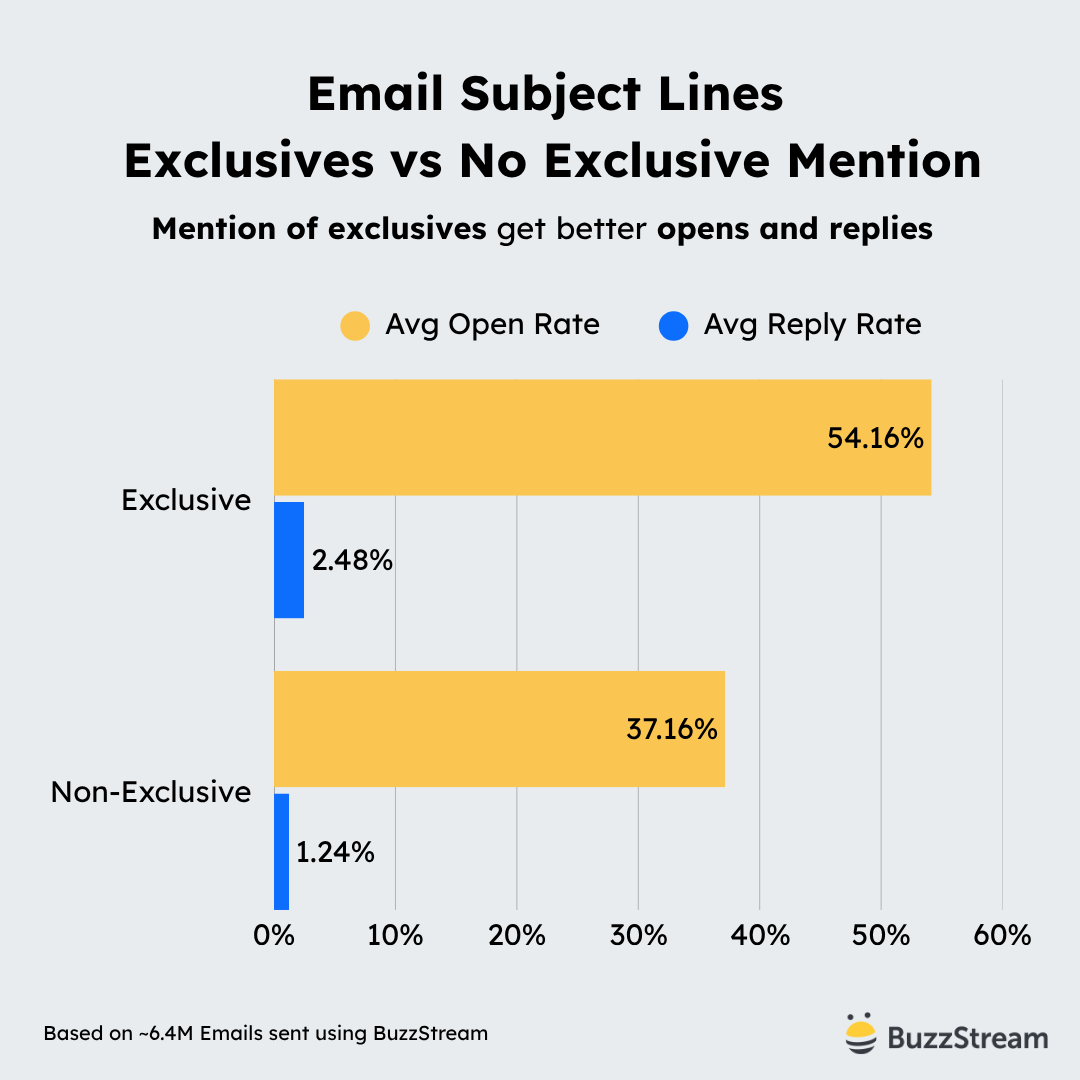
This may seem obvious once you see the numbers.
But if it’s so obvious, why don’t more PRs use exclusives?
Overall, just 13.38% of pitches in our dataset mention exclusives.
I know that some PRs feel that exclusives limit coverage, but given the ever-shrinking pool of journalists and publications, I believe that exclusives may be the key to success in this context.
But, there are a few more angles I’d like to highlight before we draw some overall conclusions.
Does Title Case or Sentence Case Matter?
When I was with Siege Media, we conducted a study and found that sentence case performed best for the types of link building we did in 2016.
For those of you who are unsure, here’s the quick key:
- Sentence case doesn’t capitalize every word.
- Title Case Capitalizes Every Word.
So, let’s see if this trend still holds:
Based on this data, it appears that title case outperforms sentence case, with an open rate of 40.75% and a reply rate of 1.46%, compared to 35.03% and 1.01% for sentence case, respectively.
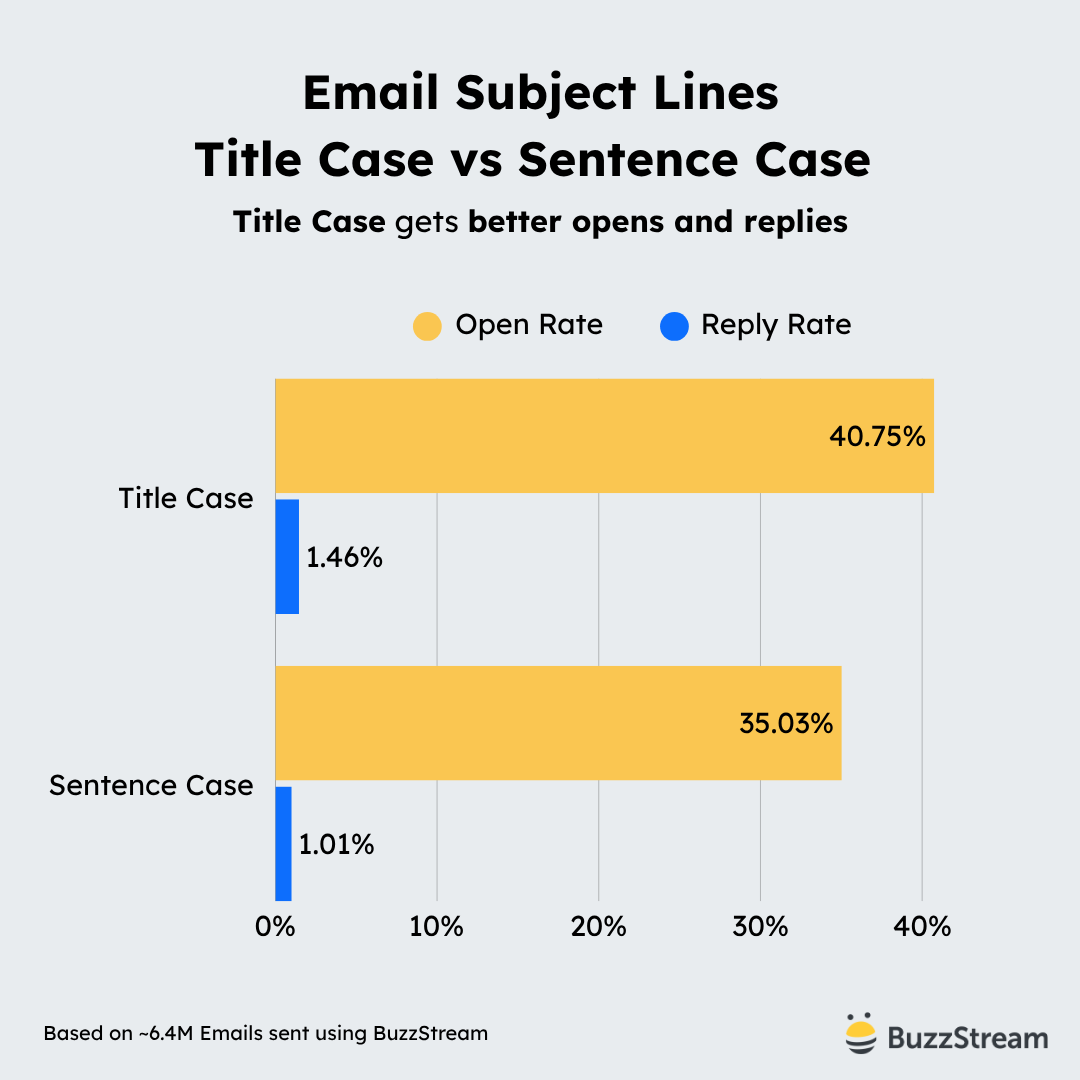
This is a minor detail that seems to have a significant impact.
Over 78.43% of our users use sentence case, while the other ~22% use title case (a very small percentage use all caps, which I don’t recommend).
Next, I wanted to consider something that might come into play when journalists are scanning their inboxes: reading comprehension.
Does Reading Level Impact Subject Line Open Rates?
I hypothesize that, given journalists have less time, they will be more inclined to open a subject line that is easy to read and comprehend.
I analyzed our dataset using the Flesch-Kincaid Reading Ease score, which ranges from 1 to 100 (with 100 being the most complex), based on word complexity.

As you can see, the best open rates begin at the 10th-grade reading level (40.54%) and peak at college and beyond (41.22%).
To help illustrate the range, here are some examples:
- 5th Grade – Bringing Back Y2K – How to get Zendaya’s Coachella look for less
- 8th-9th Grade – AI Tools Are Changing How Teens Study — But Are They Helping?
- College+ – Urban Migration Trends: Why Gen Z Is Reshaping Housing Demand in Midwestern Cities
While recommendations from the UX research site NNGroup recommended writing web content for the 6th grade reading level, it seems like that doesn’t carry over to subject lines, at least not for journalists.
I assume this is because educated journalists most likely have a higher literacy level than the average reader.
However, realistically, this may ultimately come down to how a journalist or publication writes its headlines.
Best practice when pitching is to try to emulate the headline writing style of your target journalist. Therefore, it is possible that more publications are being pitched by journalists who write in a more formal style.
(I may also do some digging into the headline writing style of major publishers to see if there is any correlation. Let me know if you think this is a good idea for a post!)
Upon breaking down the usage, it appears that more PR professionals prefer a reading level of 10th-12th grade.
College+: 17.67%
10th-12th Grade: 28.86%
8th-9th Grade: 24.92%
6th-7th Grade: 16.58%
≤5th Grade: 11.97%
So, there is some alignment there, but PRs may be able to go even higher.
Recapping Findings at a Glance
Based on the data in our study, the perfect subject line would have these features:
| Feature | Example |
|---|---|
| Between 40-71+ characters | 44% of renters are skipping lease clauses for costly rentals |
| Between 9-13 words | Study reveals 55% of Brits don’t get a good night’s sleep |
| Uses brackets up front | [New Data]: Data breach from a top healthcare company |
| Uses “Study finds” or “Data reveals” | Study finds 7 in 10 Gen Zs can’t find Arkansas on a map |
| Uses Title Case | These U.S. Cities Rank Highest for Rent Inflation |
| Offers Exclusive | [Exclusive] First Look at New Email Outreach Product |
| Mentions a Publication | [Exclusive for The Verge] Phones use this new technology even though it’s banned |
| Reading Level: 10th Grade+ | New Data Reveals Surprising Shift in Media Link Practices |
| Optimized for Desktop | Google Mentions Are Up—But Not Where You’d Think |
| Avoids Over-Personalization | Flight Hacks That Travel Pros Won’t Share |
| Provides Emoji (Optional) | 🍻 Cities With The Best Breweries In the USA |
You could follow these perfectly, but really, it comes down to relevance.
If you aren’t reaching relevant journalists, none of the wording or structure matters.
The Perfect Subject Line is Relevant to the Beat
The best way to stand out is to deliver a pitch that is relevant to a journalist.
We’ve found that a highly targeted approach to building email lists yields the best open rates, replies, and coverage rates.
Furthermore, both Muck Rack’s State of Journalism 2025 and Cision’s State of the Media 2025 highlight that journalists ignore non-relevant pitches.
Journalists will sometimes go as far as to block you from subsequent pitches when they aren’t relevant, limiting your pool even further for later campaigns (not to mention giving the PR industry a bad name).
So, before you craft your subject line, be sure you are taking the time to understand a journalist’s beat and if they are still actively covering it.
For instance, say I’m looking for journalists who cover the Love Island reality TV show.
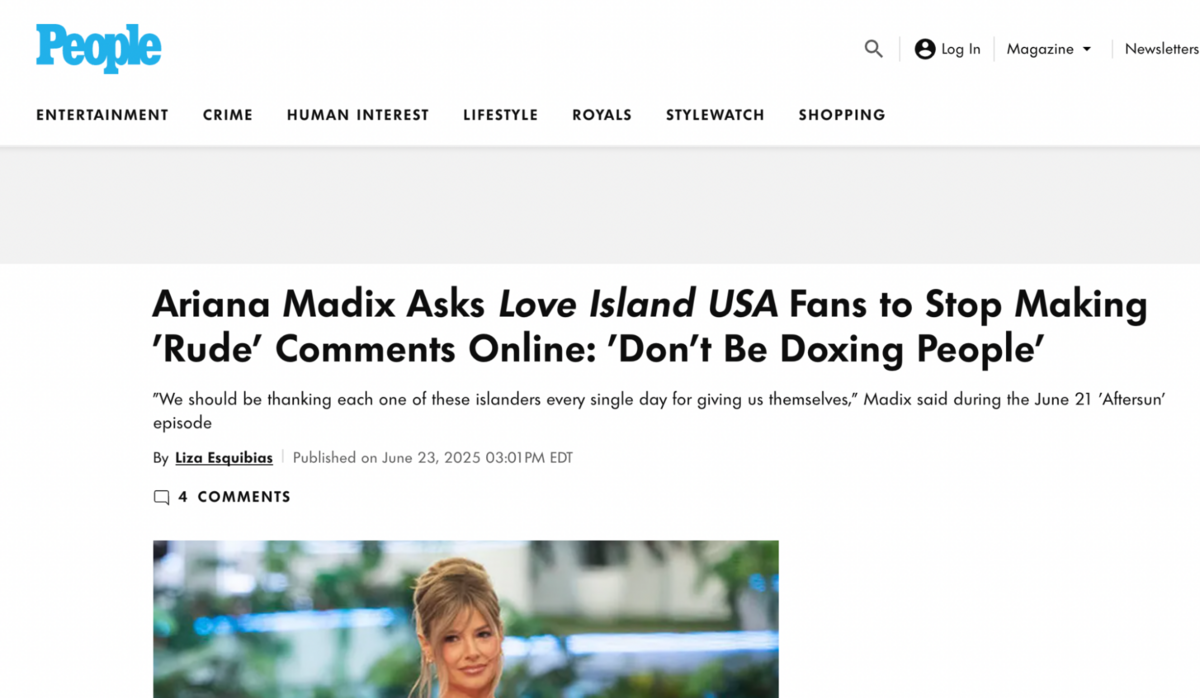
To understand what Lisa Ezquibias of People Magazine covers, I’d start with her bio page.
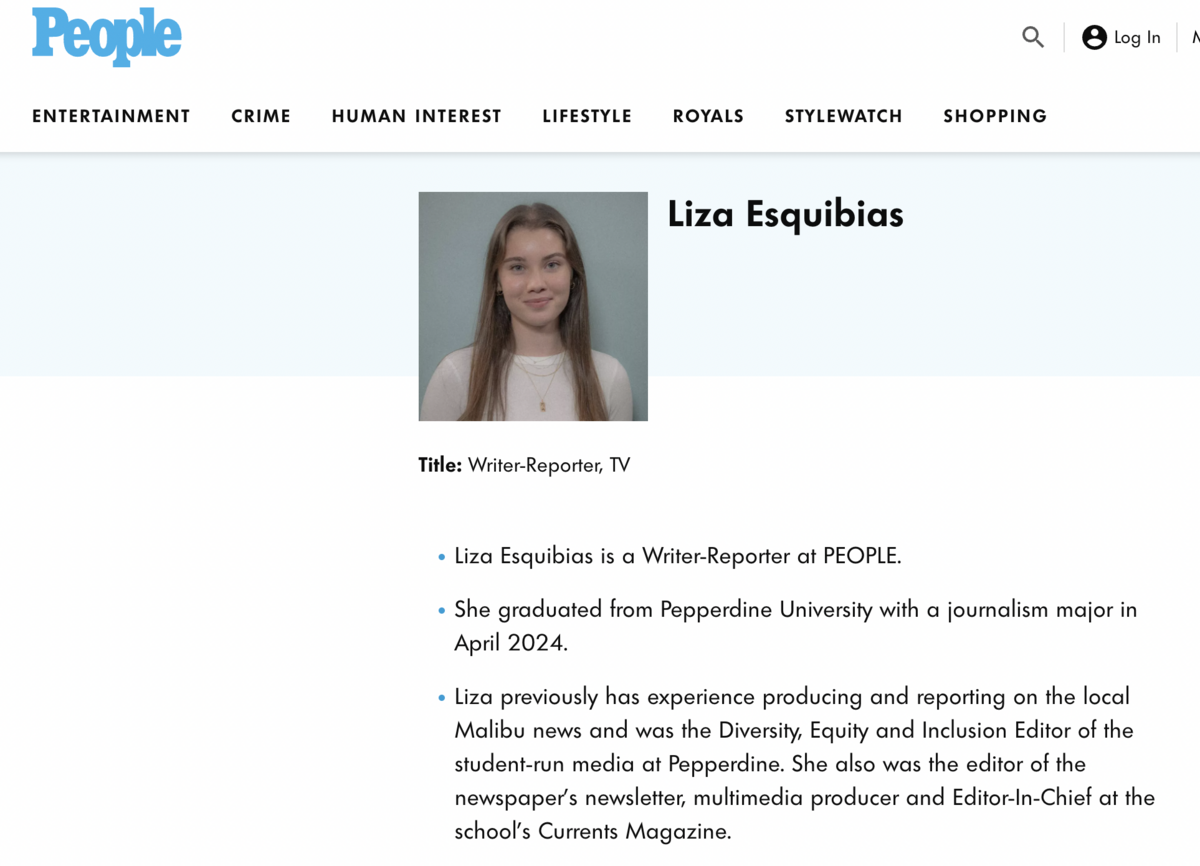
Unfortunately, I don’t find much there, so I’d look at her recent articles.

With recent articles, I have a better sense that she’s covered two Love Island stories recently.
This process helps guarantee a more targeted result.
The downside is that it’s incredibly time-consuming.
I can do this in a fraction of the time at scale with BuzzStream’s new media list-building tool, ListIQ.
Here’s a Google News search for the term “love island”.
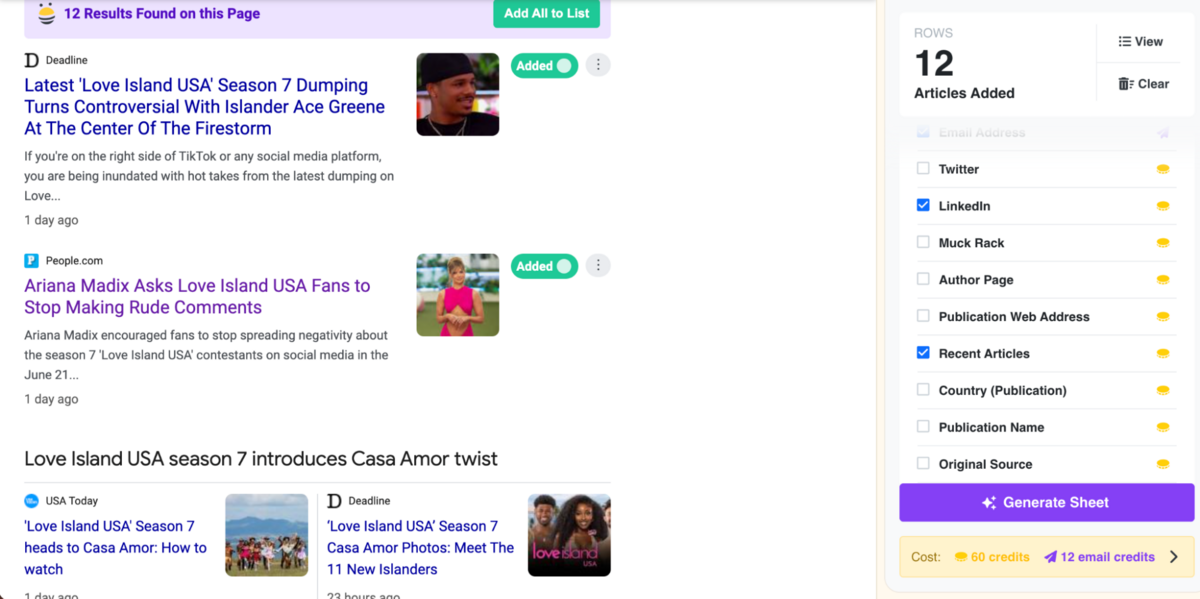
I ask ListIQ to generate a media list for me based on these search results.
Then, I can easily see details like bio, job titles, and recent articles for multiple journalists at once:
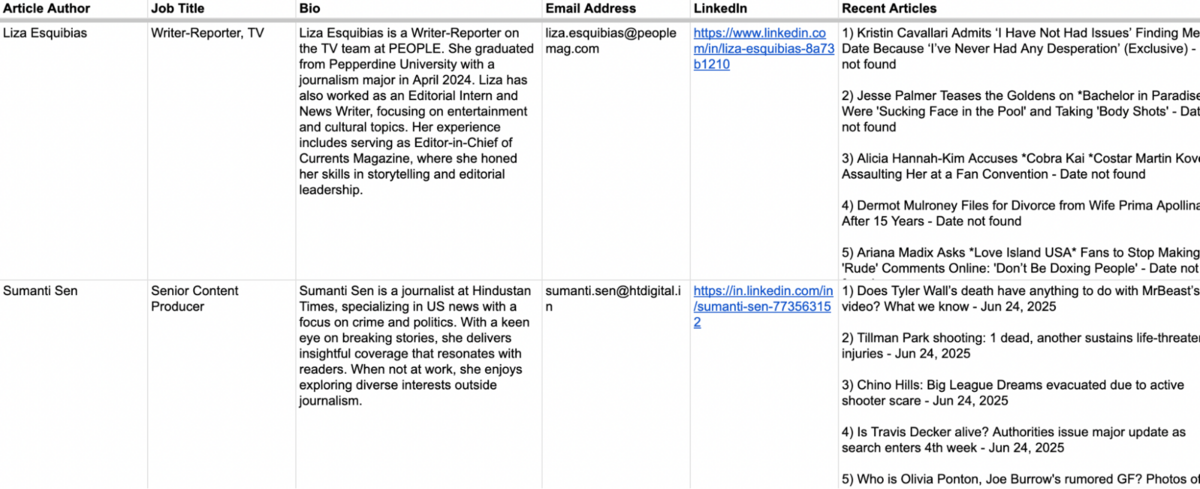
It also provides me with social media information and verified email addresses, so I can easily contact them with a subject line perfectly tailored to their beat.
This deep analysis is required to stand out in journalists’ crowded inboxes.

 End-to-end outreach workflow
End-to-end outreach workflow



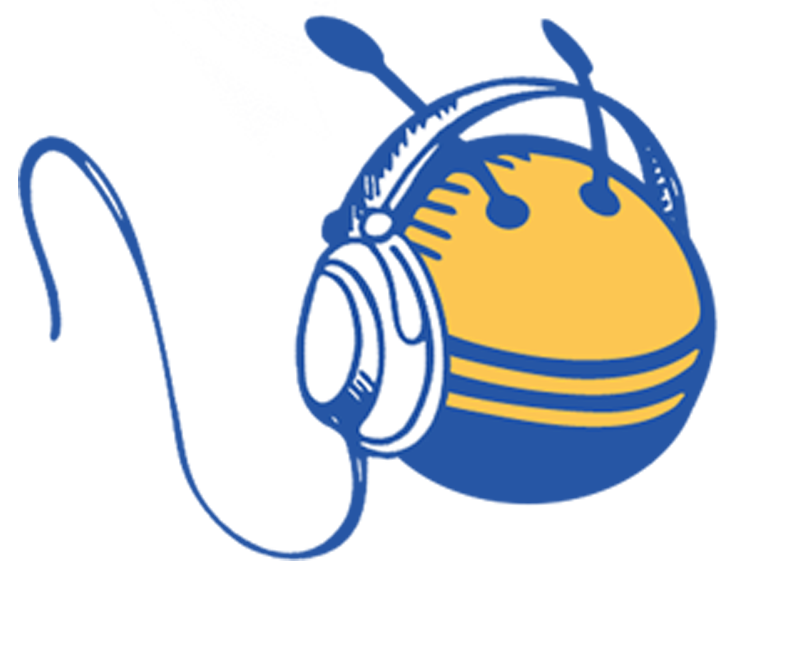 Check out the BuzzStream Podcast
Check out the BuzzStream Podcast







